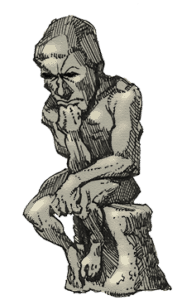When we began this practice, almost a decade ago, I was quite impatient with what I saw as the “pretence of science” that seemed to inform a lot of poor decision making in the world of marketing. But over the years I came to realize that some quantitative tools were essential if you were going to run a business on a large scale. In an attempt to square this circle I consulted my brother Jay, a PhD archaeologist who has built and run a contract archeology company in Tucson for twenty-five years.
I began by asking Jay about the proper role of quantitative analysis in the social sciences (because if marketing does resemble some variety of science, it sure ain’t physics). He told me that in the social sciences any question that can be answered yes or no by quantitative analysis alone is probably a trivial question. I told him I understood that only too well, thinking of the misuse of science by a lot of my clients. But then, I said, what are you doing out there with your surveying equipment, measuring the distance from the fire pit to the various pot shards and mapping all the data on your computer?
Ah, he said, here’s the point: if you do the quantitative analysis well then the numbers reveal patterns that are not visible to the naked eye. Based on those patterns you develop a hypothesis about how things go together, which can then be tested with new data. The hypothesis is a story, a way of attributing meaning to the numbers, and the virtuous cycle of data-story-data-story is the way we explore and slowly accumulate a better and deeper understanding of the world.
I like this explanation because it helps me understand the relationship between the science metaphor and the story metaphor as applied to marketing. At a superficial level, the two approaches seem antagonistic. Marketers committed to the “scientific” approach believe that research can be used to understand consumers in order to directly influence their behavior. Brands built on story focus instead on finding the meaning in a brand in order to develop an authentic relationship around common values. Superficial attempts to graft the two together often feel like manipulation. But if you understand the virtuous cycle of story and science you can use your insight to develop a brand that commands deep and enthusiastic loyalty.
The question is, are you using your research primarily to find levers that drive traffic or are you using the insight you gain from research in order to connect a brand that really means something to a group of consumers who value what it means? In other words, are you giving your consumers something to buy into or just something to buy?
I would love to hear examples of either kind, if you can think of any.
